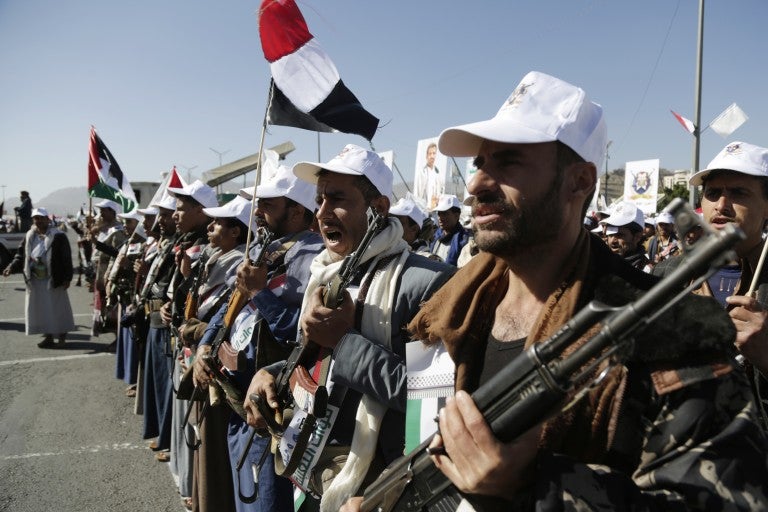August 7, 2015
1. Support for Terror - Iran is the world’s leading state sponsor of terror. As a result of this deal, it stands to receive somewhere between $50 billion and $150 billion in currently frozen assets. While it is expected that much of that will be directed toward improving the lives of its population, if even a small percentage of it is directed toward its terror proxies—Hamas in Gaza and the West Bank, Hezbollah in Lebanon, and the Houthis in Yemen—or the genocidal Assad regime in Syria, it would sow further discord in an already unstable region. The United States should not be willing to countenance this multiplication of death, destruction, and fear. Read more.
2. The So-Called “Right to Enrich” - In 2013, Secretary Kerry said, point blank: "We do not recognize a right to enrich.” This deal, unfortunately, recognizes that right. A dismantling of Iran’s nuclear infrastructure would have removed the Iranian nuclear threat. By granting Iran the right to enrich, this deal cements the threat, ensuring that it will continue, for the distance from no enrichment to weapons-grade uranium is far, far shorter than the one from low-enriched uranium to weapons-grade. Additionally, by recognizing that heretofore nonexistent “right” for Iran, the United States is implicitly condoning the development of nuclear programs in other countries in the region. Read more.
3. Weak Inspections Protocol - Throughout the negotiations, the P5+1 touted the “unprecedented inspections” that would ensure that Iran abides by the terms of the agreement. The final deal, however, provides for an unacceptable 24-day (and perhaps longer) waiting period between when IAEA inspectors request access to a suspicious site, and when Iran must grant them access. This is a far cry from the “anywhere, anytime” inspections that Energy Secretary Ernest Moniz and Deputy National Security Advisor Ben Rhodes once called for. To provide the best chance of stopping the notoriously deceitful Iran from sneaking out toward developing a bomb, the U.S. should insist on a deal that allows inspections of all suspicious sites within 24 hours, not 24 days. Read more.
4. Nondisclosure of the Possible Military Dimensions of Past Nuclear Work - To this day, Iran has refused to admit that any of its previous nuclear work was geared toward developing a bomb, insisting instead that they were producing medical isotopes and nuclear fuel. This bold-faced denial of wrongdoing doesn’t bode well for Iran’s future cooperation with the deal, but it also presents a practical problem for the inspectors, who can only understand the full extent of what they’re inspecting if they know just how far Iran has gone down the road toward nuclear weapons. While Iran has committed to some disclosure, it will reportedly be doing the necessary sampling itself, before handing those samples over to the IAEA for testing. This is beyond comprehension. Read more.
5. Lifting of Ballistic Missile and Conventional Arms Restrictions - From the start, the U.S. insisted that these talks were only about Iran’s nuclear program. But then how to explain the lifting of the sanctions blocking the sale of conventional weapons to Iran, and the sanctions blocking the sale of ballistic missile components to Iran within 5 and 8 years respectively? The U.S. should not agree to a deal that not only paves the way for Iran to add to its conventional weapons arsenal, but also allows it to further develop its ability to produce ICBMs, which can only be used for military purposes against long-range targets. Read more.


